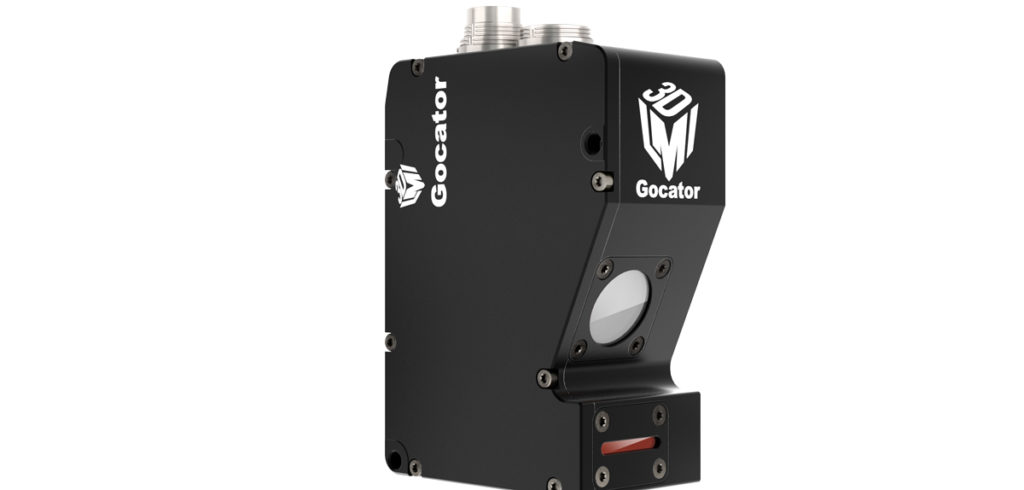LMI Technologies’ Gocator 2530 builds on the success of its previous high-speed blue laser 2500 series, which now provides customers with a wider field of view option and allows for an even more cost-efficient implementation of 3D inspection systems in battery, CE, and RUTI applications.
The company’s 3D inspection system features a custom embedded controller, enabling it to process highly detailed 3D surface scans and communicate decisions on board without the need for an external controller. With no dependencies on external hardware, latency between scan data acquisition and the decision output is minimized, allowing the sensor to keep pace with modern factory speeds.
This degree of sensor autonomy is the key differentiator between smart solutions and other 3D profilers on the market that require transfers of raw data to a PC for processing. In cases where acceleration is required to meet cycle time, the pre-processed data from a smart sensor can be compressed and sent to dedicated processing nodes (PC or vision accelerator) while keeping latency to a minimum.
In comparison, non-smart sensors have to send raw pixel or profile data downstream to PCs or external controllers to carry out their 3D measurement, which dramatically increases latency and performance jitter with potential drops in processing altogether. The situation is made worse when multiple sensors must stream and synchronize datasets before measurement can occur, which is a common case in tire scanning where three sensors are needed for both sidewalls and radial runout.
Terry Arden CEO of LMI Technologies, commented, “Increasing demand for higher resolution and speed in detecting small features must be met with equal innovation on the part of sensor manufacturers. You have to invest in key technology components like custom camera chips and optics to move the bar and achieve the next leap in performance. This requires financial investment and the desire to lead the industry to the next generation of product capability.”
Featuring an IP67-rated machined aluminum and optimized rugged exterior, the system is able to handle vibration and limit the negative effects of temperature drift while also being able to cope with environmental stresses such as moisture and dust. Other improvements include bandpass filters to limit the effects of ambient light, and a much faster inspection speed, thanks to a combination of custom components and a smart sensor design.
On top of speed improvements, sensors used in inline inspection need to have a large field-of-view (FOV) and large measurement range (MR), giving the user the ability to scan and inspect more of the target with fewer sensors, while still capturing the finest surface detail. Built-in support features for multi-sensor networking enables high-density 3D models to be delivered to users who want to expand the field of view or acquire multiple views from the same target while maintaining ultra-high resolution.
Sophisticated software provides powerful built-in tools for filtering, profile and surface analysis, multi-sensor alignment, and support for various PLC and robot protocols. With no additional software to install, Gocator 2530 offers out-of-the-box setup and configuration. A web browser-based user interface provides flexible configuration of settings and measurement tools on a multitude of devices.
To overcome limitations of current technology the scanner uses building-block technologies that deliver the necessary resolution, repeatability and sensitivity for defect detection on fast-moving small parts, while smart all-in-one software offers surface generation, measurement, and pass/fail decision making on board the sensor. As a result, the sensor is said to be able to achieve two and a half times the resolution at more than twice the speed of the current industry standard.
When developing the system the real challenge the company faced was sensor design involving high-performance custom components that required chip-level engineering. The brand figured out the best way to get all of the essential pieces on board the sensor itself while still delivering a compact form factor and managing heat dissipation.
Arden added, “What makes Gocator 2530 unique is its ability to achieve complete quality inspection at very high speeds. This is accomplished with an optimized design for high speed 3D laser profiling, a custom high-speed imager, embedded FPGA processing, and built-in measurement tools for 3D alignment, surface stitching, and 3D feature extraction. As a result, Gocator 2530 sensors handle the complete processing pipeline – from raw image data to a 3D measurement result – in an all-in-one device that operates at inspection rates up to 10kHz.”



